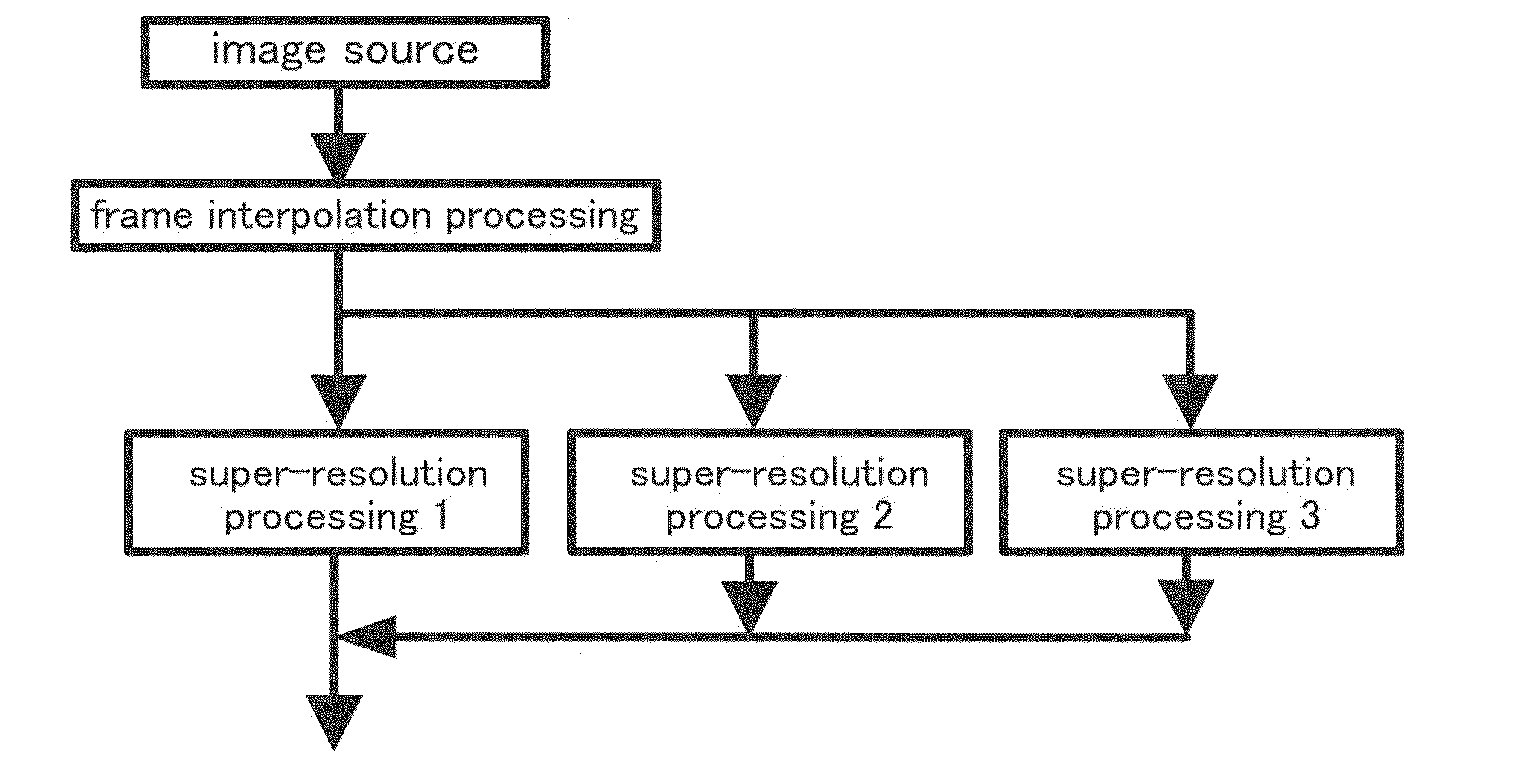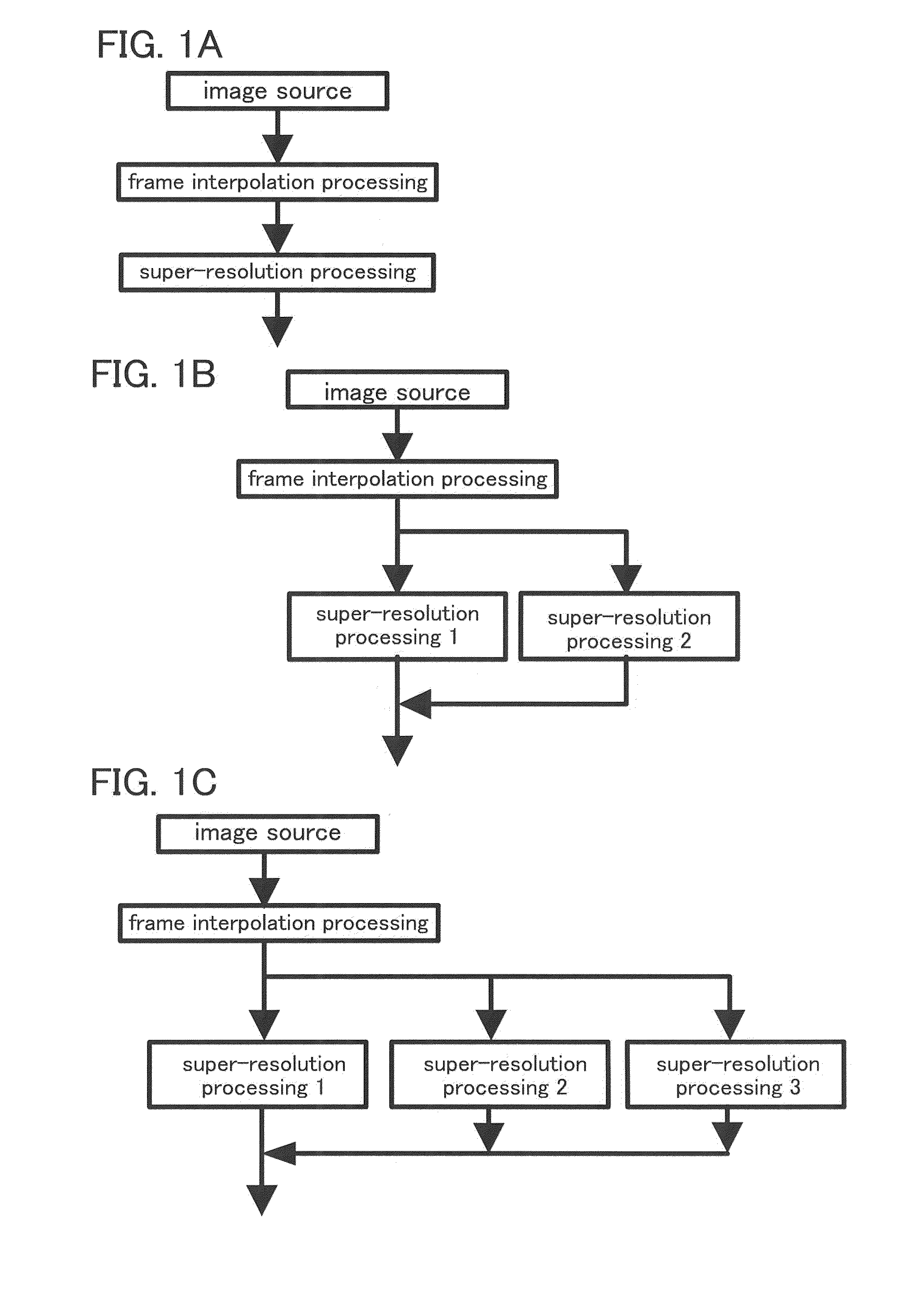Method for driving display device
a display device and display device technology, applied in the direction of geometric image transformation, instruments, and details involving image processing hardware, can solve the problems of increasing power consumption, reducing image quality, and inability to display correct images, so as to achieve the effect of improving image quality
- Summary
- Abstract
- Description
- Claims
- Application Information
AI Technical Summary
Benefits of technology
Problems solved by technology
Method used
Image
Examples
embodiment 1
[0106]Super-resolution processing is processing for generating high-resolution images from low-resolution images. Alternatively, super-resolution processing is processing for restoring lost data in photographing, signal transmitting, or the like. Therefore, by performing super-resolution processing on averaged images whose detailed parts are crushed due to low resolution, images whose detailed parts can be accurately recognized can be generated. Thus, in the case of displaying such high-resolution images, high-quality images can be displayed. For example, in the case of an image of a park where a great number of small stones are disposed or a tree having a great number of small leaves, by performing super-resolution processing, an image of each small stone or each small leaf can be accurately recognized. In a similar manner, by performing super-resolution processing, detailed parts of a character which cannot be read due to blur can be recognized. Thus, the character can be accurate...
embodiment 2
[0152]Next, examples of super-resolution processing technologies are described. By performing super-resolution processing, a high-resolution image can be displayed.
[0153]First, a moving region is detected and speed data of the region is extracted. That is, with respect to an image at given time, an optical flow, which is a vector illustrating the flow of each pixel, is calculated from two images before and after the image. Then, from the extracted speed data, the amount of positional deviation per image in the region is detected with accuracy of less than the size of one pixel. That is, from the calculated optical flow, the amount of positional deviation between images is calculated. Then, in accordance with the amount of detected positional deviation, the level of luminance between pixels is interpolated from a plurality of images in an image column. With such processing, a high-resolution image having resolution which is higher than physical resolution can be generated. Thus, it c...
embodiment 3
[0171]Note that an image can be displayed by performing a variety of processings after super-resolution processing or frame interpolation processing. Therefore, the content described in any of the other embodiments can be applied to, combined with, or replaced with this embodiment.
[0172]FIG. 7A illustrates a processing flow in the case where super-resolution processing is performed using an image signal on which frame interpolation processing is performed so that resolution is increased, and then edge enhancement processing is performed. A variety of processings are further performed after the edge enhancement processing. After that, an image can be displayed. Therefore, the processing flow in FIG. 7A corresponds to a processing flow where edge enhancement processing is added to the processing flow in FIG. 1A.
[0173]By performing super-resolution processing before edge enhancement processing in this manner, resolution can be accurately improved. Since the edge enhancement processing ...
PUM
 Login to View More
Login to View More Abstract
Description
Claims
Application Information
 Login to View More
Login to View More - R&D
- Intellectual Property
- Life Sciences
- Materials
- Tech Scout
- Unparalleled Data Quality
- Higher Quality Content
- 60% Fewer Hallucinations
Browse by: Latest US Patents, China's latest patents, Technical Efficacy Thesaurus, Application Domain, Technology Topic, Popular Technical Reports.
© 2025 PatSnap. All rights reserved.Legal|Privacy policy|Modern Slavery Act Transparency Statement|Sitemap|About US| Contact US: help@patsnap.com



